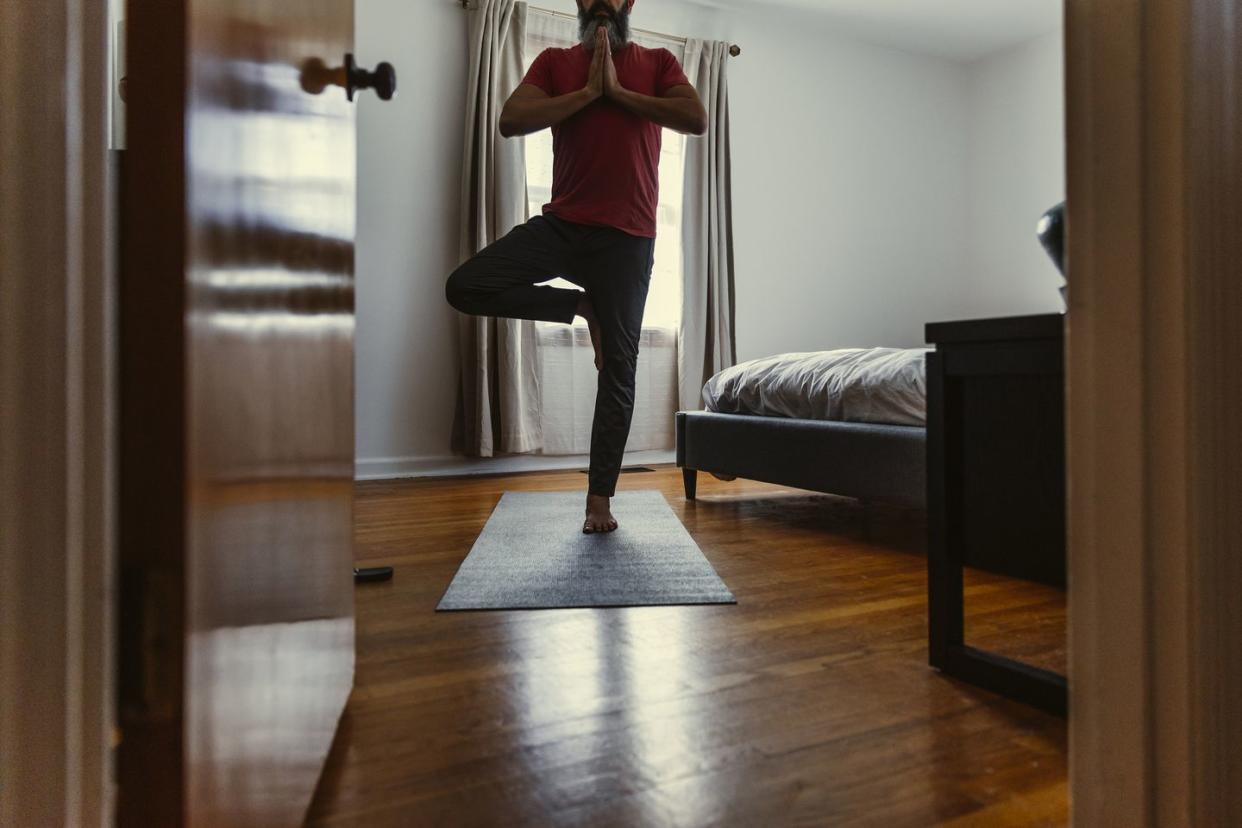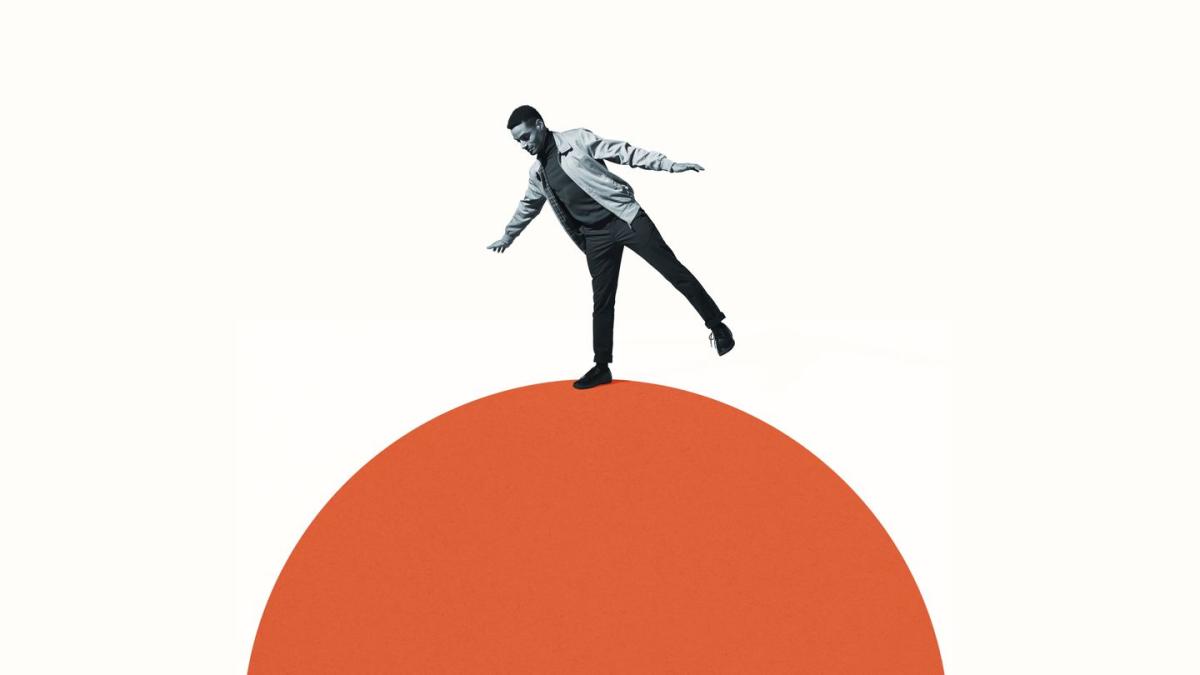Perhaps you’ve already tried balancing on one leg during a routine as simple as brushing your teeth. If you can balance on one leg for at least 10 seconds, rejoice! Chances are, you will outlive many of your peers. On the other hand, if you are over the age of 50 and cannot perform this 10-second balance test, you could be at a higher risk of dying within a decade compared to your peers, according to 2022 research from Brazil.
The Brazilian study, published in the British Journal of Sports Medicine last year, found that the inability to balance on one leg for 10 seconds translated to an 84 percent higher risk of death from any cause for people ages 51 and older.
This was a longitudinal study, meaning that researchers observed the same subjects several times across a span of time. In this case, the research took place between 2009 and 2020, though it was part of a broader project that began in 1994. It recruited 1,702 people between the ages of 51 and 75, all living in Brazil.
The researchers gave participants three chances to try to balance unsupported on one leg for 10 seconds during an initial checkup. They found that one in five failed to complete the task. Then, they followed up on the participants’ health over a period of seven years and found that 17.5 percent of those who had failed the test had died, while only 4.5 percent of those who had passed the test had died.
Though previous studies have made other longevity claims—anything from running 40 minutes a day to embracing new tech to feeling younger than your chronological age to mopping floors—this recent study suggests that having good balance might be the secret sauce for survival (or is at least one of the main ingredients).
Try the balance test yourself: Find back-up balance support, like a wall or chair, in case you need it. Stand on one leg, resting your other leg on the back of the standing leg. Keep your arms at your sides. Repeat up to two more times if unsuccessful.
Typically, the average person experiences a decline in muscle strength after the age of 35 at a rate of 1 to 2 percent a year. The risk of sarcopenia, an age-related muscle-wasting disease, also increases drastically from the age ranges of 65 to 70 and 80 and older, from 14 percent to 53 percent respectively. Between the ages of 30 and 40, flexibility also diminishes, with men losing it faster than women.
By comparison, balance on average tends to decline after a person’s mid-50s, according to the research. (The inability to complete the balance test became twice as difficult every five years among the participants).
“What’s the big deal?” you might wonder. You are getting older, and at some point in time you might lose your balance, fall, fracture your hip, and … the end. “Of course this is a possibility,” Claudio Gil Araújo, director of research and education at Exercise Medicine Clinic in Rio de Janeiro, Brazil, who spearheaded the study, tells Popular Mechanics. “But to me, the most important reason for people falling is because they are unfit, physically speaking,” Araújo says. In part, living longer is a matter of being fit, but not necessarily in the way the fitness industry has taught you.
The modern fitness industry holds a very myopic view of what fitness is. “Go to any mega-gym in New York and you will find people running on the treadmill, usually those who run well, and people lifting in the weight room, usually those who lift well,” says Araújo. How many can you count working on things like balance or flexibility, though? “Things like balance, you can do at home. Balance is hard to sell,” says Araújo.
But balance is the foundation of a person’s ability to move and function independently, and it requires the coordination of several physiological systems. It’s a core element of longevity, something well-documented in previous studies. Yet the desire to cheat death is stronger than ever, today, as shown by the global longevity and anti-senescence therapy market, which is projected to reach $44.2 billion by 2030. So, this research could not stress more why you should focus on improving your balance if you are a fan of a longer existence on this planet.


“This study adds, perhaps in a new population, to numerous prior studies which have shown that quick and simple tests of physical performance—including walking speed, grip strength, or as in this case, balance—used with older adults can be predictive of poor health outcomes,” Thomas Buford, a professor at the University of Alabama at Birmingham Division of Gerontology, Geriatrics and Palliative Care and director for the UAB Center for Exercise Medicine, tells Popular Mechanics.
It is of course simplistic to think that poor longevity test performance can cause these outcomes directly, Buford continues, but these outcomes are a good proxy for overall health. “These outcomes can have utility, but one must be cautious at the individual level to overreact to a single performance on any one of the individual tasks,” Buford says. That said, he believes encouraging and providing tools for older adults to maintain their physical function as much as possible as they age is essential.
But what could these tools be? Apparently, no need to sweat it off or bulk up in the gym, especially if you don’t feel like it or are in a more advanced age bracket. Three 10-minute workouts a week can do the trick, provided they are intense, says Araújo. “If you use common sense, listen your body, and progress slowly, exercise is very safe, even for those older subjects,” he says. “Performing 6 or 8 reps of an exercise at a high intensity is much better than doing 10 or 15 reps at a much lower intensity.”
And when it comes to balance training, it’s even easier: switching between legs for 20 seconds in total, 10 seconds per leg, is all you need for the day. A word of caution though: those who struggle with balance, but who want to try the 10-second balance test, should stand close to someone else, a wall, or some other support. (“The checkup occurred in a medical setting,” Araújo is quick to point out.)
“Of course, if someone just trains balance, it will not likely be sufficient to promote a healthier and longer life,” Araújo says. “Physical fitness comprises aerobic and non-aerobic—muscle strength, flexibility, balance, and body composition—components.”
But testing your balance first is a good place to start. “Provided you have fulfilled the safety criterion, you could try safely balancing on your legs for 10 seconds each while you brush your teeth,” he says. That’s it. Not only did you complete your balance workout for the day, but you also stayed one more step ahead of death.
You Might Also Like

Rachel Carter is a health and wellness expert dedicated to helping readers lead healthier lives. With a background in nutrition, she offers evidence-based advice on fitness, nutrition, and mental well-being.








